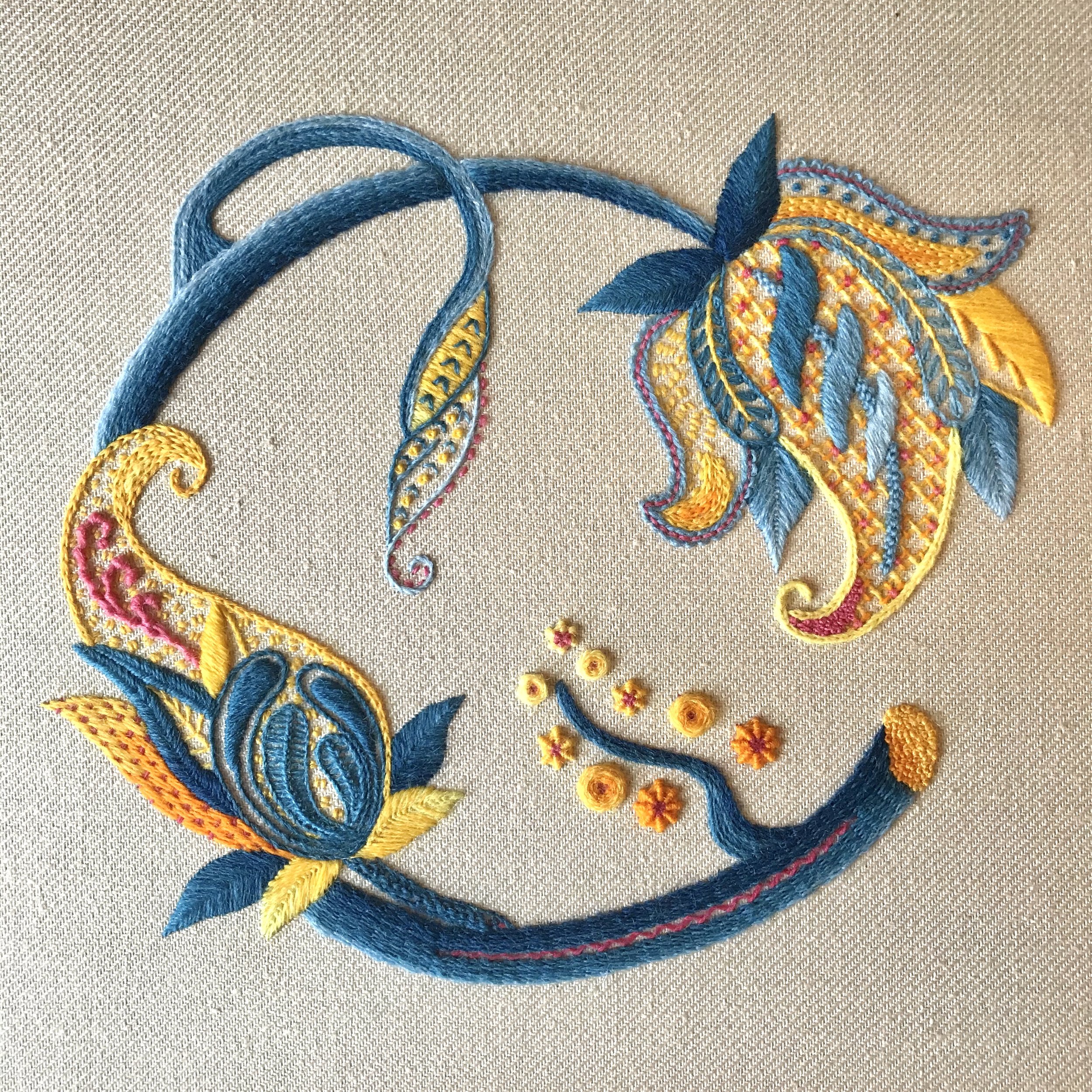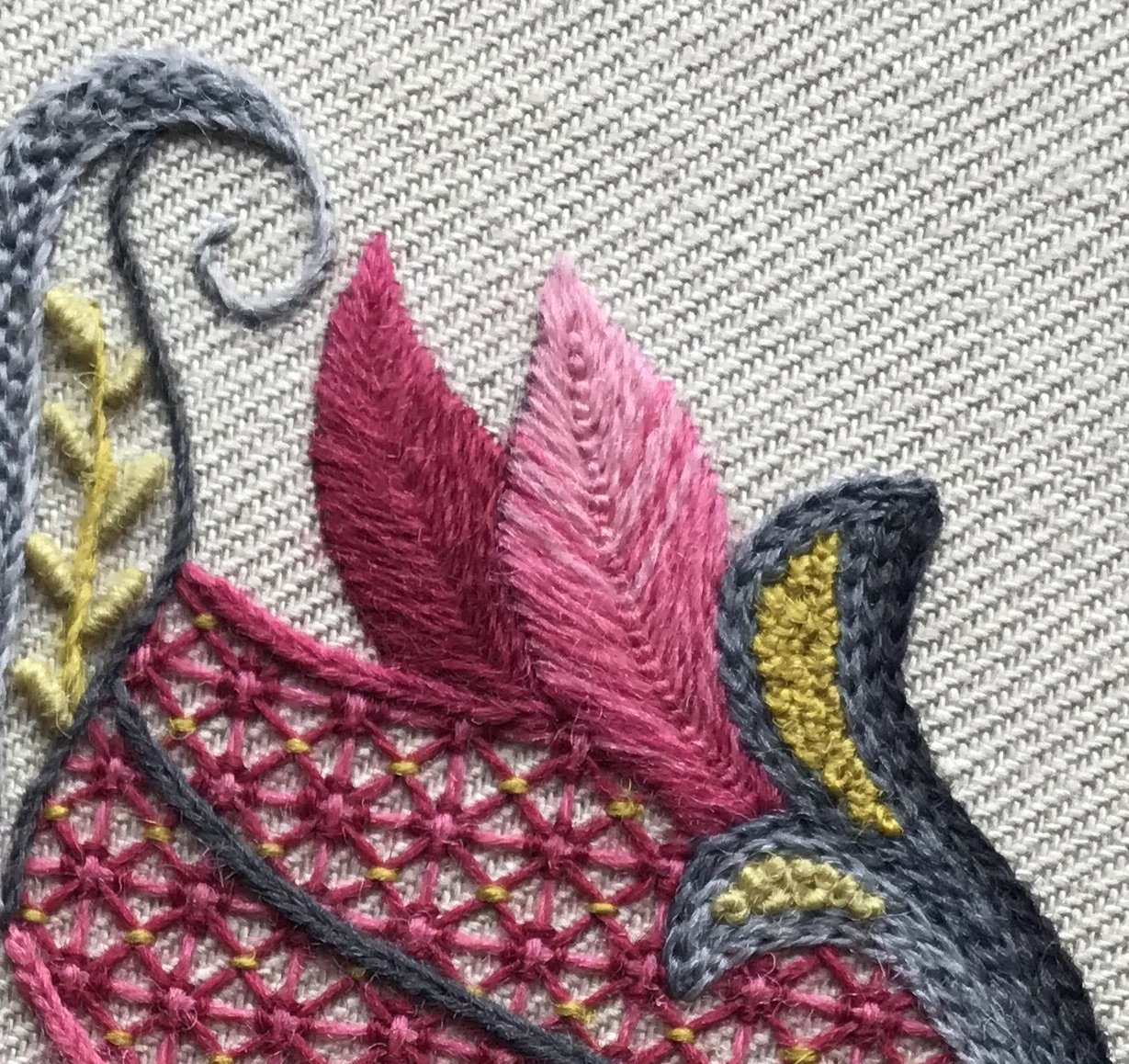Key Elements of a Strong Jacobean Crewelwork Design
Jacobean crewelwork is a timeless embroidery style known for its elegance, whimsy, and intricate details. Whether you’re creating a traditional piece or adding a modern twist, mastering the foundational elements of design is crucial. Here are the key elements that make a Jacobean crewelwork design truly shine:
stylised motifs
Jacobean designs thrive on creative, stylised motifs. These aren’t meant to look realistic—leaves, flowers, and animals are abstracted and embellished to create a playful yet sophisticated aesthetic. Focus on exaggerated shapes and smooth, flowing lines that capture the essence of the subject rather than exact realism.
2. Motifs Not to Scale
One hallmark of Jacobean crewelwork is its playful disregard for scale. Oversized leaves, tiny animals, and large flowers can all coexist harmoniously in the same design. This freedom allows you to emphasize certain elements and creates visual interest without the constraints of realism.
3. Balanced Solid and Open Areas
A successful design balances areas of dense stitching with open spaces to avoid overwhelming the viewer. Dense motifs, like heavily stitched leaves or flowers, should be complemented by lightly stitched areas or blank space to create a sense of rhythm and harmony across the piece.
4. EFFECTIVE COLOUR BALANCE AND ACCENT COLOURS
The colour palette is key to a Jacobean design. Choose a harmonious combination of colours and distribute them thoughtfully throughout the piece. Use an accent colour sparingly to highlight focal points, such as a flower center or a key motif. This creates contrast and draws the eye without overpowering the overall design.
5. Hillocks and Stems for Support
Hillocks and stems act as the “foundation” of Jacobean designs, anchoring the motifs and giving the composition weight. These elements should be visually strong and bold enough to support the other motifs, ensuring the design feels cohesive rather than floating aimlessly.
6. TEXTURAL VARIETY THROUGH STITCH COMBINATIONS
One of the joys of Jacobean crewelwork is the variety of stitches it incorporates. Combine different stitches to create texture and interest—for example, use satin stitch and long and short for smooth surfaces, French knots and whipped wheels for raised details, seeding stitch for subtle texture and closed fly, fishbone and vandyke for leaf shaped motifs. Experimenting with stitch combinations will make your piece more dynamic and engaging.
7. Shading for Depth and Consistency
Shading adds depth and dimension to your motifs, elevating them from flat to lifelike. Achieve this by blending colours within a motif, transitioning from light to dark shades in areas where the light source changes. Be consistent with your light source to maintain realism and coherence across the design.
By incorporating these key elements—stylised motifs, whimsical scales, balanced composition, thoughtful colour use, structural support, varied stitches, and effective shading—you can create stunning Jacobean crewelwork that embodies the timeless beauty of this beloved embroidery style. Happy stitching!




